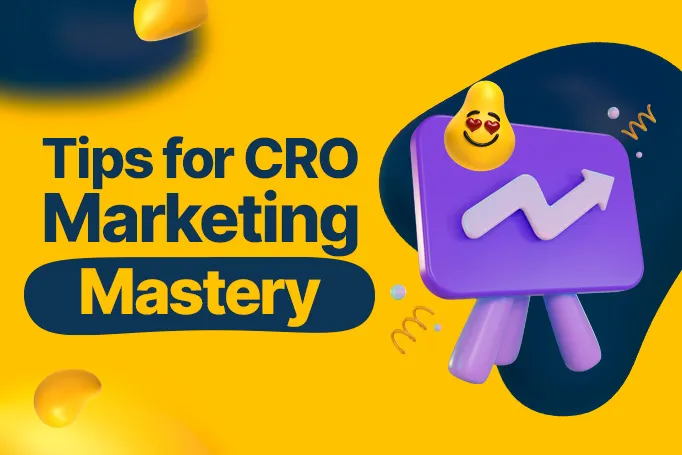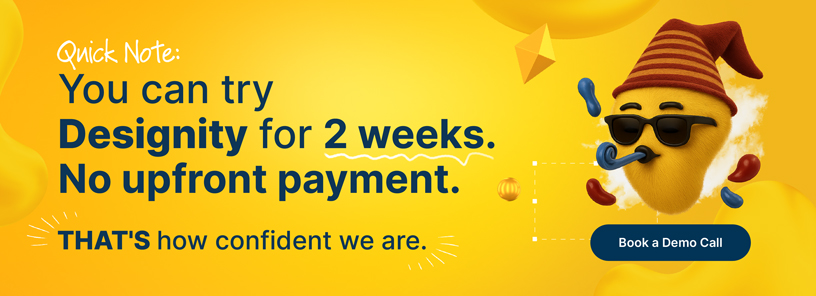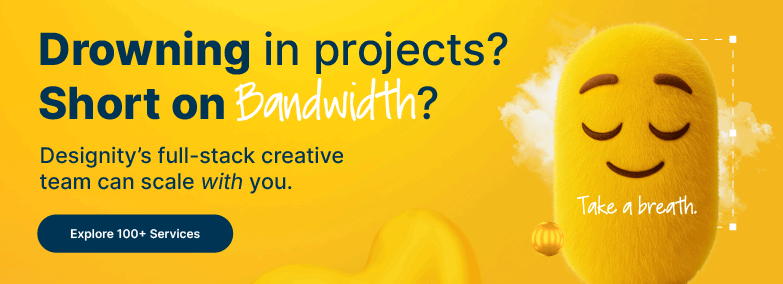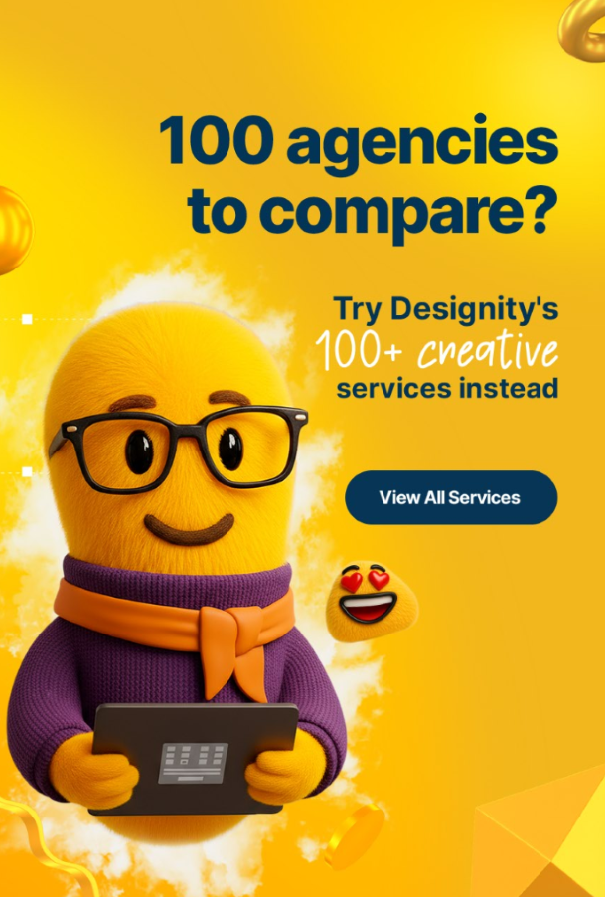Digital marketing is not for the faint of heart but, have no fear, we have the game-changing strategies you need to attract new customers and drive your growth!
If you’re a small business looking to kick your digital strategies up a notch, you may have considered implementing CRO (conversion rate optimization) marketing techniques.
So, what is CRO marketing? And how you can leverage it to boost your marketing success?
Strap in, because today’s blog has the answers you need! We’re diving into CRO marketing to bring you tips and techniques your business needs to make maximum impact!
What is CRO in Marketing?
In marketing, conversion rate optimization refers to the process of optimizing a website or campaign to improve conversion rates — the percentage of website visitors who complete a desired action (convert).
Whether that action is making a purchase, filling out a form, subscribing to newsletters, or any other targeted behavior, optimized content encourages your audience to take specific action and convert at a higher rate, contributing to the overall success of your digital marketing strategies.
Calculating Conversion Rates
So, how do you know what your conversion rates are in the first place so you can improve them?
It all sounds complicated but, luckily, calculating your conversion rates is pretty easy. Just divide the number of conversions by number of visitors and multiply by 100 to get the percentage of visitors who converted.
The basic formula looks like this:
Conversion Rate = (Total Number of Conversions / Total Number of Visitors) X 100
So, let’s say you had 500 visitors to a landing page with a call to action (CTA) button requesting your visitor to sign up for an email list. If 25 of those 500 visitors sign up, then your equation looks like this:
Conversion Rate = (25 / 500) X 100
If we math correctly, we should end up with a conversion rate of 5%.
See? Simple!
But What Conversion Rates Should I Be Aiming For?
Your ideal conversion rate depends on a few different factors, like your industry, business type, and the goals you choose for your website or campaign.
As a general rule of thumb, though, here is a quick guideline to help you determine a good conversion rate:
- E-commerce — A good conversion rate for e-commerce websites typically falls in the range of 2% to 5%. High-performing e-commerce sites might get rates above 5%, while new or niche businesses might be in the lower range.
- Lead Generation — For websites focused on lead generation (e.g., sign-ups, form submissions), a conversion rate of 5% to 10% is often considered solid. However, industries with longer sales cycles may have lower rates.
- Content Sites — Content-driven websites might see conversion rates below 1%, as their primary goal is often to provide information rather than prompt action.
Tips to Improve Conversion Rates

There are some steps you can take to increase the percentage of your conversion rates all around.
Here is a guide to get you started:
Define Your Goals
Before you can start making improvements to your conversion rate optimization strategies, you’ll need to decide what your goals are.
So, what are your conversion goals? What specific actions do you want your visitors to take?
Setting goals is crucial for providing direction to your strategies and allowing you to effectively tailor your strategies to encourage your audience to take action.
Know Your Customers
You should then get a good feel for your target audience’s pain points, behaviors, needs, and preferences.
Consult your consumer and engagement data to create detailed user personas to better understand your target audience and their user journey. These personas will provide valuable information to help you see the nuances of your audience’s preferences.
By discovering what resonates best with them, you can better tailor your messaging and content to create a more personalized and engaging experience that encourages conversions.
Aesthetic Appeal
If you want your customers to hang out on your website/landing page/ etc., it’s got to be a welcoming place that encourages them to stick around long enough to convert.
Visually appealing design and well-organized pages with fresh and relevant content work wonders to engage your users and keep their attention.
Clear Value Prop
It’s a competitive world out there, so your users need to quickly see the value of the products or services you offer or the benefits of the desired action you want them to take.
Create a compelling and concise value proposition that clearly communicates all of the sweet advantages of engaging with your brand. Help your visitors understand that converting right away is beneficial to them!
By putting focus on the immediate value of the conversion, you can create a sense of urgency and relevance that has your visitors converting away without hesitation!
Social Proof
Your customers should also know that converting right away is totally safe and does not come with any unwanted risks.
Using social proof can demonstrate your credibility and trustworthiness to any customers who are holding back due to a hesitancy to give over their info.
Here are some ways to add social proof to your online assets:
- Customer Testimonials — Genuine feedback and endorsements from satisfied customers, sharing their positive experiences with your products or services.
- Customer Reviews — Publicly accessible reviews on platforms or your website, offering insights into the real-life experiences of previous customers.
- User-generated Content — Encouraging customers to share user-generated content related to your brand, showcasing authentic interactions and experiences.
- Influencer or Affiliate Endorsements — Collaborating with influencers or affiliates who align with your brand to provide credible endorsements, reaching a broader audience.
- Case Studies — Detailed accounts of successful collaborations or product implementations, demonstrating tangible results and building confidence in your offerings.
- Trust Badges — Displaying security badges, certifications, or industry awards to convey that your business adheres to industry standards and practices.
Testing
Multivariant testing or A/B testing is a critical step that can help you refine your conversion rates and help you optimize your results.
Experiment with different elements of your website like your CTA buttons, headers, layout, and forms. The goal is to assess and compare different versions of those elements to identify what works best for your target audience.
Understand Your Results
After conducting comprehensive testing and analyzing user behavior, the next step is to interpret the generated data to gain some insight.
This process goes beyond just studying the raw data, it’s about using your data to help you make informed decisions and identify not only what is working well, but also the possible roadblocks that could be keeping using from converting.
Navigate Roadblocks
Speaking of roadblocks … once you have identified any roadblocks or barriers in the conversion process, you need to deal with them accordingly.
Refer to your data and make proactive adjustments as needed. Whether it’s a confusingly worded form, vague copy, slow website load times, or a hard-to-find CTA button, addressing these issues quickly is crucial to ensure a seamless user journey and increase the likelihood of your prospect converting.
Optimization is a continuous process so be sure you are checking often to keep your campaign fresh, relevant, and effective.
Another good idea is to request user feedback. Understanding customer experiences provides valuable insights and helps you pinpoint areas that could be improved!
How to Create a CRO Marketing Strategy in 12 Steps

If you’re ready to start increasing your conversion rates and optimizing your online presence, follow these 12 steps to build up a CRO marketing strategy that drives results!
1. Use Text-Based CTAs
A text-based CTA is a clear and persuasive message that prompts your users to take a specific action.
Unlike graphical CTA buttons or images, text-based CTAs use written content that can better engage and communicate with your audience to coax them into taking immediate action. Use these CTAs within your content, headlines, or as standalone messages so that they integrate with the rest of your content.
2. Use a Lead Flowchart
A lead flowchart is a visual representation of the user’s journey, outlining the steps your user takes from clicking over to your website to clicking your CTA and converting.
Creating a lead flowchart helps you better understand and optimize the user experience by identifying touchpoints on their journey, decision points, and potential drop-off points.
By understanding the flow, you can optimize each stage to enhance user engagement and increase your conversions.
3. Optimize Your Landing Pages
Optimizing your landing pages is a crucial step in your CRO strategy since a good landing page greatly increases the chances of converting your visitors into leads or customers.
A well-optimized landing page is designed to provide a seamless experience for your visitors and guide them through your content and towards the desired action.
Elements of a good landing page are clear and concise messaging, engaging visuals, strategically placed and irresistible CTAs, and user-friendly navigation.
4. Turn Leads to MQLs
Turning your leads into Marketing Qualified Leads (MQLs) is another important phase in the conversion process.
Doing this involves putting in place strategies to nurture and qualify your leads to keep them moving smoothly down your marketing funnel.
Use targeted email campaigns, personalized content, and other engagement tactics to provide value and build relationships with your leads. This makes it easier to tailor your approach to prime them from curious visitors to a more qualified and engaged audience who is ready to convert.
5. Build Workflows
Create a systematic and automated process by building workflows to guide your users through different stages of brand interaction.
Workflows help to streamline and personalize the user journey to keep your lead supplied with relevant content and communication based on their behavior and preferences.
Marketing automation tools can help you design workflows that nurture your leads, trigger timely follow-ups, and adapt to user actions. Whether it’s a series of email sequences, targeted promotions and deals, or personalized content, a good, automated workflow can enhance the effectiveness of your CRO strategy.
6. Use AI Chat for High-Converting Web Pages
For your highest-converting web pages, using AI chatbots can significantly boost user engagement and conversion rates.
AI chatbots provide real-time, personalized interactions with your visitors, answering their questions, providing information, and helping you to guide users through the conversion process.
This also saves your customer support team some time, allowing them to focus on more complex issues!
7. Optimize Highest-Performing Content
If you’re using analytics tools like Google Analytics, you can pinpoint pages or pieces of content that consistently drive traffic and conversions.
Once you’ve identified these high performers, you can optimize further by updating the content to keep it fresh, improving its design and visual appeal, refining your CTAs, improving SEO (search engine optimization), and more.
You can also conduct some A/B testing here to determine what tweaks are resonating best for your audience and driving even more results.
By improving your website’s highest performers, you can further increase your conversions and maximize your impact!
8. Retarget to Re-engage
Retargeting is a powerful technique to bring back visitors who previously interacted with your site but didn’t convert.
Use cookies or tracking pixels to identify these users and then retarget them using display ads or targeted campaigns to keep your brand top of mind while your potential lead scrolls through social media or spends time online.
To make sure your retargeting efforts are hitting their mark, it’s a good idea to segment your audience based on behavior to make sure that the messages they receive align with their previous interactions with your brand.
9. A/B Testing
A/B or multivariate testing can help you to further improve your website's performance by comparing different variations of a webpage, landing page, email, or ad to see which one performs better.
By testing out different elements like headlines, images, multimedia, CTAs, or layouts, you can gather valuable data on your user's preferences and find out what works best to enhance user engagement and increase your conversions.
10. Mobile Optimization
These days, you can count on your prospects having smartphones and using them for everything from scrolling through social media to checking emails to shopping online.
Because there’s a good chance that your visitors will land on your website or other digital assets from their smartphone, you should ensure that all of your digital content is responsive and optimized for mobile viewing.
Your text should be legible, images should load quickly, and navigation should remain seamless no matter what size of screen your visitors are using.
11. Personalized Content
Consult those user personas you created to tailor your content, messaging, and offerings to match the specific preferences, behaviors, and needs of your users!
Personalization can extend to product recommendations, email subject lines, personalized greetings, content recommendations, and promotions.
By delivering this targeted content that resonates with your visitors on a personal level, you more effectively meet their needs, provide them with the information they need, and increase their likelihood of converting!
12. Social Media Integration
Harness the power and popularity of social media platforms to drive conversions!
To do this, consult your user personas and identify the platforms most relevant to your target audience. Post your personalized, relevant, and valuable content on these platforms to build up an online presence and increase your followers.
You can encourage further engagement by using social sharing buttons on your website and within your content to let your users easily share your products, services, or content within their own networks to expand your reach and encourage more customers to convert!
Where You Should Use CRO

Here are places to incorporate CRO to boost your rates and get the results you want!
- Homepage — Optimize your homepage to create a compelling first impression and guide visitors toward key actions.
- Pricing Page — Increase conversions by fine-tuning your pricing page to address customer concerns and highlight value propositions.
- Landing Pages — Maximize the effectiveness of your advertising campaigns by optimizing landing pages for specific products, services, or promotions.
- Checkout Process — Streamline and optimize the checkout process to reduce friction and increase completed transactions.
- Product Pages — Enhance product pages with persuasive copy, high-quality images, and clear calls-to-action to drive conversions.
- Forms — Improve the performance of lead generation forms by minimizing fields, providing clear instructions, and ensuring a user-friendly experience.
- CTAs (Calls-to-Action) — Optimize the design, placement, and messaging of CTAs across your website to encourage desired actions.
- Blogs and Content Pages— Increase engagement and encourage users to explore further by optimizing content pages with relevant CTAs and navigation.
- Email Campaigns — Apply CRO principles to your email campaigns by testing subject lines, content, and calls-to-action for improved click-through rates.
- Exit Pop-ups — Capture potential leads or encourage last-minute conversions with strategically designed exit pop-ups.
- Thank You Pages — Optimize post-conversion pages to encourage additional actions or provide valuable information.
- Mobile Experience — Ensure a seamless and optimized experience for users accessing your site via mobile devices.
- Social Media Ads and Landing Pages — Align your social media ad messaging with optimized landing pages to maintain consistency and drive conversions.
- Search Engine Results Pages (SERPs) — Optimize meta descriptions and title tags to increase click-through rates from search engine results.
Benefits of CRO Marketing
Conversion Rate Optimization (CRO) in marketing offers several key benefits that contribute to the overall success of your digital strategies.
Here are a few of them:
- Improved Conversion Rates — The primary goal of CRO is to enhance the percentage of website visitors who take a desired action, such as making a purchase or filling out a form, leading to increased conversions.
- Enhanced User Experience — CRO involves optimizing various elements of your website, leading to a more user-friendly and seamless experience. This can result in higher satisfaction among visitors.
- Increased Revenue — By increasing the conversion rate, you're effectively maximizing the value of each visitor to your site, leading to a potential boost in revenue without increasing traffic.
- Cost-Effective — Compared to acquiring new traffic through advertising or marketing campaigns, CRO focuses on maximizing the value of existing traffic, making it a cost-effective strategy.
- Better ROI on Marketing Spend — As CRO improves the efficiency of your website in converting visitors, it maximizes the return on investment (ROI) for your marketing efforts.
- Data-Driven Decision Making — CRO relies on data and analytics to make informed decisions. By continuously analyzing user behavior, A/B testing, and other metrics, you can refine your strategies based on real-time insights.
- Increased Customer Trust — A well-optimized website that delivers a positive user experience builds trust with your audience. Trust is a critical factor in encouraging users to take desired actions.
- Competitive Advantage — Websites that prioritize CRO often outperform competitors by providing a smoother and more compelling user journey. This can be a significant competitive advantage in the digital landscape.
- Enhanced Brand Reputation — A positive and efficient online experience contributes to a positive perception of your brand. Users are more likely to engage with and recommend brands that provide a satisfying online interaction.
- Adaptability and Agility — CRO allows you to quickly adapt to changing user behavior and market trends. This agility is crucial in the fast-paced digital environment.
- Better Understanding of Audience — Through testing and analysis, you gain a deeper understanding of your audience's preferences, behaviors, and pain points, enabling more targeted and personalized marketing efforts.
- Optimized Marketing Campaigns — CRO insights can be applied to other marketing channels, refining campaigns and ensuring a cohesive and optimized user experience across all touchpoints.
Best CRO Tools
Monitoring your conversion rates and optimizing your online presence is a challenging task, but the right tools can make your life a bit easier. Use these following tools to help you analyze, test, and optimize your assets for your customers!
- Google Analytics — Provides in-depth website analytics, user behavior insights, and conversion tracking.
- Hotjar — Allows you to see how users interact with your website through heatmaps, session recordings, and surveys.
- Optimizely — A robust experimentation platform that enables A/B testing, multivariate testing, and personalization.
- Crazy Egg — Offers heatmaps, scroll maps, and user recordings to analyze user behavior and improve conversions.
- VWO (Visual Website Optimizer) — A comprehensive A/B testing and multivariate testing platform.
- Google Optimize — Integrates with Google Analytics and facilitates A/B testing and personalization.
- Unbounce — Focuses on creating and testing landing pages to improve conversion rates.
- Mouseflow — Provides session replay, heatmaps, and funnels to understand user interactions.
- Convert — A versatile optimization tool offering A/B testing, split testing, and personalization.
- SurveyMonkey — Useful for collecting user feedback through surveys, helping identify pain points and preferences.
- HubSpot — Offers tools for lead nurturing, customer relationship management (CRM), and marketing automation.
- Qualaroo — Enables the creation of targeted surveys to gather qualitative data on user experience.
- Lucky Orange — Combines heatmaps, session recordings, and live chat to understand and engage with users.
- Kissmetrics — Focuses on user analytics, providing insights into customer behavior throughout their journey.
- Visual Website Optimizer (VWO) — A powerful testing tool for A/B testing, split URL testing, and multivariate testing.
- Heap Analytics — Captures every interaction on your website, allowing for retroactive analysis without pre-defined events.
- Instapage — A landing page platform with A/B testing capabilities to optimize conversion rates.
- SurveyGizmo — Offers advanced survey features to collect feedback and insights for CRO.
<div class="c-blog_comp-cta cc-component-1"><div class="c-blog_comp-cta-left"><div class="c-blog_comp-cta-left-wrap"><img src="https://global-uploads.webflow.com/61cdf3c5e0b8155f19e0105b/6369722e59155470b6840033_Potential-clients.png" loading="lazy" alt="" class="c-blog_comp-cta-left-img"></div></div><div class="c-blog_comp-cta-right"><div class="c-blog_comp-content"><div class="c-text-wrapper cc-mb-32"><div class="c-title-4 cc-bold"><strong>Want to save money without sacrificing the quality?</strong></div></div><div class="c-text-wrapper"><div class="c-text-2">Say goodbye to traditional, expensive agencies and unreliable marketplaces. Say hello to Designity.<br></div></div></div><div class="c-blog_comp-wrapper"><a href="/pricing" target="_blank" class="c-button cc-primary cc-inverted w-button"><strong>Get Your 2-Week Trial</strong></a></div></div></div>
Ready to Make Maximum Impact?
Implementing a successful CRO marketing strategy takes not only the right kind of content and digital assets, but time, effort, and a team of creatives.
And if you’re a smaller brand that’s got enough on your plate already, you may be wondering where you’re going to find the time and the employees with the right expertise and skill set to get this all done.
But don’t stress. Designity’s got your back.
By putting Designity on your team, you can hook up your business with a marketing partner to secure your success, complete with a dedicated Creative Director to take the reins on all of your marketing projects, and a crack team of creative talent — the top 3% of US-based creative talent, in fact!
This puts all of the web designers, developers, graphic designers, copywriters, social media experts, brand experts, and more on your team, ready to create the content and websites that send your conversion rates through the roof and boosts your overall marketing efforts!
Why not have a look at our portfolio and see the rest of the conversion rate-boosting content we’ve created for other brands just like yours?
And when you’re ready, book your demo call to start your two-week, no-obligation trial.
If we’re not the marketing partner you’ve been dreaming of, then, no problem. You can cancel anytime during your trial and walk away not owing us a dime.
But if we are, then your CD and creative team is eager to get started on crafting the perfect strategies and content to boost your conversion rates and elevate your brand in 2024!
Are you ready for your brand to start making maximum impact?
























